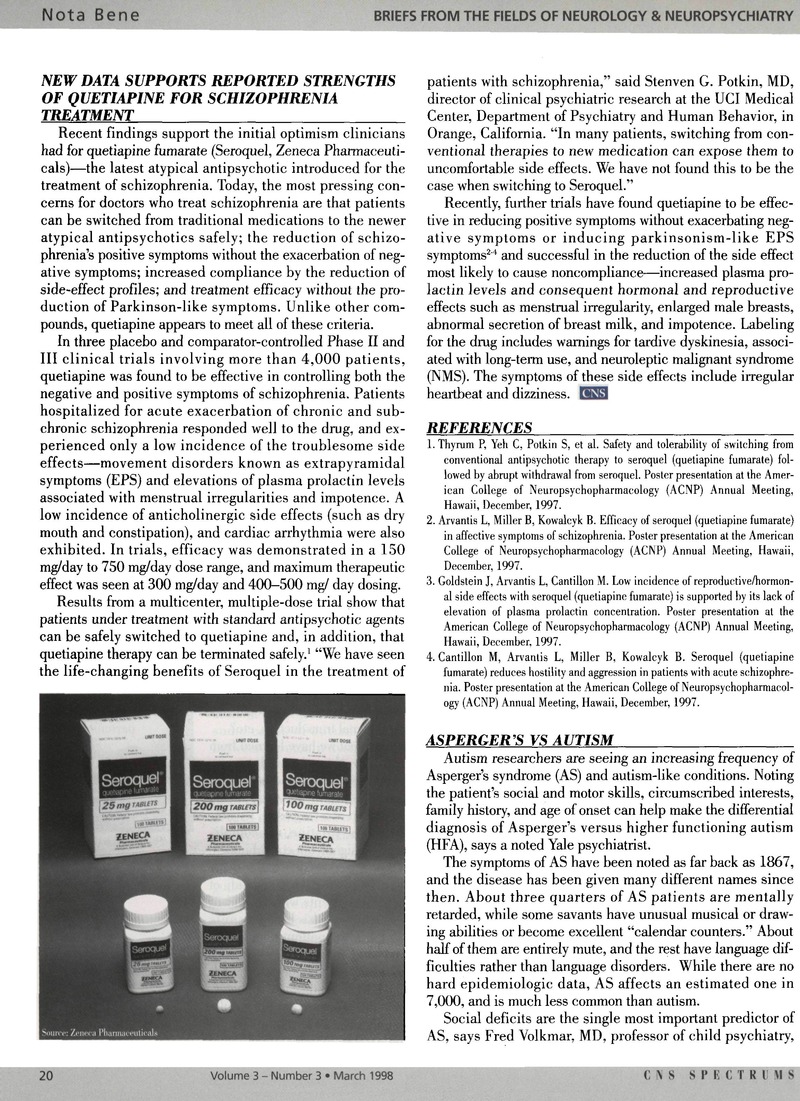No CrossRef data available.
Article contents
Briefs from the Fields of Neurology & Neuropsychiatry
Published online by Cambridge University Press: 07 November 2014
Abstract
An abstract is not available for this content so a preview has been provided. Please use the Get access link above for information on how to access this content.

- Type
- Nota Bene
- Information
- Copyright
- Copyright © Cambridge University Press 1998
References
REFERENCES
1.Thyrum, P, Yeh, C, Potkin, S, et al. Safety and tolerability of switching from conventional antipsychotic therapy to seroquel (quetiapine fumarate) followed by abrupt withdrawal from seroquel. Poster presentation at the American College of Neuropsychopharmacology (ACNP) Annual Meeting, Hawaii, December, 1997.Google Scholar
2.Arvantis, L, Miller, B, Kowalcyk, B. Efficacy of seroquel (quetiapine fumarate) in affective symptoms of schizophrenia. Poster presentation at the American College of Neuropsychopharmacology (ACNP) Annual Meeting, Hawaii, December, 1997.Google Scholar
3.Goldstein, J, Arvantis, L, Cantillon, M. Low incidence of reproductive/hormonal side effects with seroquel (quetiapine fumarate) is supported by its lack of elevation of plasma prolactin concentration. Poster presentation at the American College of Neuropsychopharmacology (ACNP) Annual Meeting, Hawaii, December, 1997.Google Scholar
4.Cantillon, M, Arvantis, L, Miller, B, Kowalcyk, B. Seroquel (quetiapine fumarate) reduces hostility and aggression in patients with acute schizophrenia. Poster presentation at the American College of Neuropsychopharmacology (ACNP) Annual Meeting, Hawaii, December, 1997.Google Scholar


